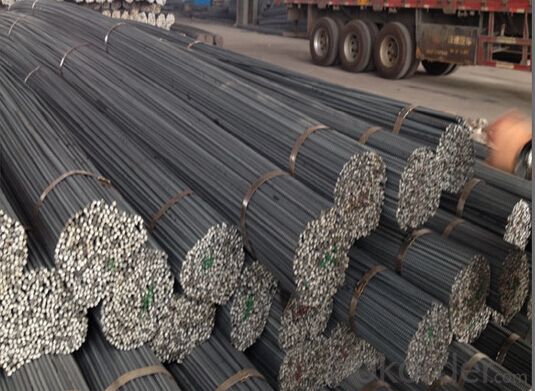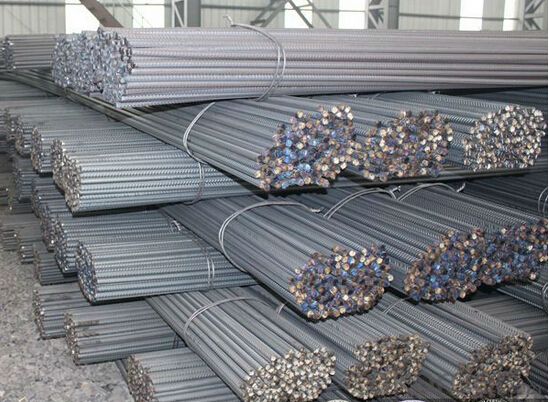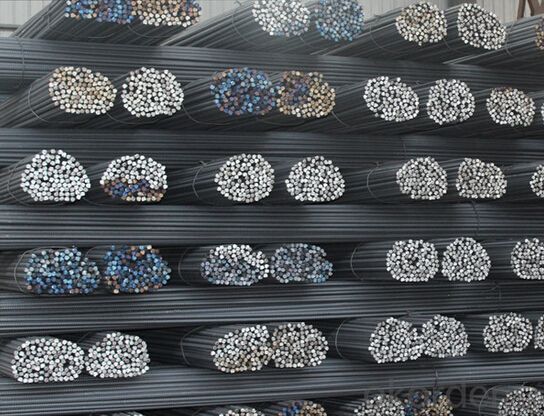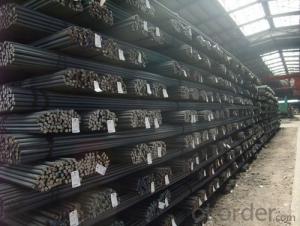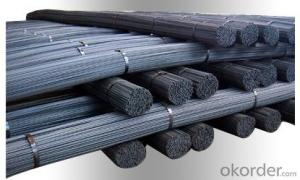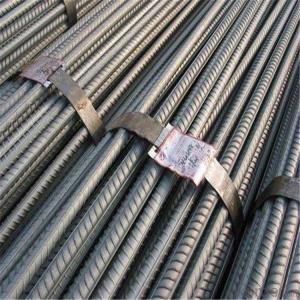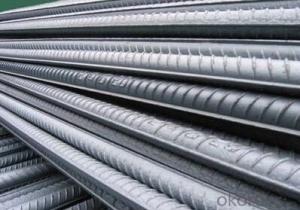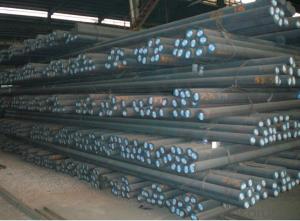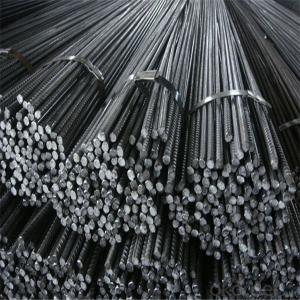BS4449B 500A/500B Deformed Steel Rebar/Iron Rod for Construction
- Loading Port:
- Tianjin
- Payment Terms:
- TT OR LC
- Min Order Qty:
- 100 m.t.
- Supply Capability:
- 10000 m.t./month
OKorder Service Pledge
Quality Product, Order Online Tracking, Timely Delivery
OKorder Financial Service
Credit Rating, Credit Services, Credit Purchasing
You Might Also Like
Specification
Standard:
AISI,JIS,GB,BS,DIN,API,EN,ASTM
Technique:
EFW,Hot Rolled,Cold Rolled,Cold Drawn,ERW,Forged,Saw,Extruded,Spring
Shape:
U Channel,Square,C Channel,Hexagonal,Round,Rectangular,Oval,LTZ
Surface Treatment:
Galvanized,Coated,Copper Coated,Color Coated,Oiled,Dry,Chromed Passivation,Polished,Bright,Black,PVDF Coated
Steel Grade:
Q195,Q215,Q235,Q215B,Q235B,RHB335,HRB400,200 Series,300 Series,400 Series,600 Series,SS400-SS490,10#,20#,A53(A,B)
Certification:
ISO,SGS,BV,IBR,RoHS,CE,API,BSI,UL
Thickness:
6-34MM
Width:
6-34mm
Length:
12m
Outer Diameter:
6-34mm
Net Weight:
10kg
Packaging:
seaworthy packaging
BS4449B 500A/500B Deformed Steel Rebar/Iron Rod for Construction
Details of the BS4449B 500A/500B Deformed Steel Rebar/Iron Rod for Construction
| Standard & Grade: | GB1499-98 : HRB335,HRB400,HRB500 |
| BS4449-1997 : GR460,GR500 | |
| CAN/CSA-G30.18-M92 : 400W | |
| ASTM A615 : Gr.40, Gr.60 | |
| Diameter: | 6mm;8mm;10mm;12mm;14mm;16mm;18mm;20mm;22mm;25mm;28mm;30mm;32mm;35mm;40mm |
| Length: | 6m,9m,12m |
| Packing: | Bundle packing |
| Origin: | China |
| Application: | Construction,Road,Machinery processing,Welding fields. |
| Delivery time: | 10-25 days |
| Shipment: | By bulk vessel or Container |
| Documents: | Mill Test Certificate,Commercial Invoice,Packing List,Certificate of Origin |
Company Introduction of the BS4449B 500A/500B Deformed Steel Rebar/Iron Rod for Construction
CNBM International Corporation is the most import and export platform of CNBM group(China National Building Material Group Corporation) ,which is a state-owned enterprise, ranked in 270th of Fortune Global 500 in 2015.
With its advantages, CNBM International are mainly concentrate on Cement, Glass, Iron and Steel, Ceramics industries and devotes herself for supplying high quality series of refractories as well as technical consultancies and logistics solution.

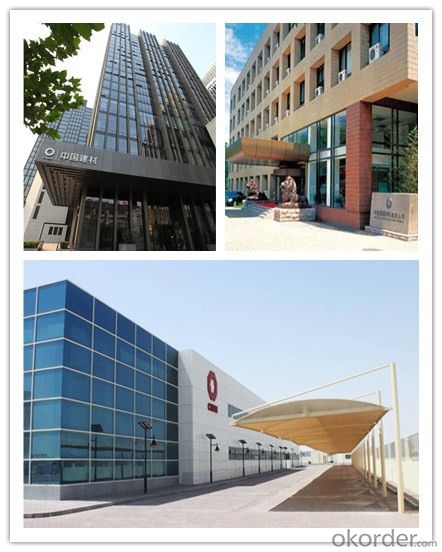
Packaging & Delivery of the BS4449B 500A/500B Deformed Steel Rebar/Iron Rod for Construction
| Packaging Detail | Sea worthy packing /as per customer's packing instruction |
| Delivery Detail | 15 ~ 40 days after receiving the deposit |
FAQ
| Are you a trading company or manufacturer? | Manufacturer |
| What’s the MOQ? | 1000m2 |
| What’s your delivery time? | 15-20 days after downpayment received |
| Do you Accept OEM service? | Yes |
| what’s your delivery terms? | FOB/CFR/CIF |
| What's the Payment Terms? | 30% as deposit,70% before shipment by T/T |
| Western Union acceptable for small amount. | |
| L/C acceptable for large amount. | |
| Scrow ,Paybal,Alipay are also ok | |
| Why choose us? | Chose happens because of quality, then price, We can give you both. Additionally, we can also offer professional products inquiry, products knowledge train (for agents), smooth goods delivery, excellent customer solution proposals. |
| What's your available port of Shipment? | Main Port, China |
| What’s your featured services? | Our service formula: good quality+ good price+ good service=customer's trust |
| Where are your Market? | Covering more than 160 countries in the world |
- Q: How do steel rebars affect the overall crack control of concrete?
- Steel rebars can significantly enhance the crack control of concrete. By providing tensile strength to the concrete, rebars help distribute and resist the formation of cracks. They act as reinforcement, preventing cracks from propagating and limiting their width, thus enhancing the overall durability and structural integrity of the concrete.
- Q: What are the listed companies that produce wire rod and thread steel?
- The wire in iron and steel usually refers to a coil of wire material with a diameter of 5.5-14. Most of the use of wire coil machine rolled coil supply, it is also known as wire rod or coil. Wire rod is one of the varieties of steel with great dosage. After rolling, it can be directly used for reinforcement and welding structure of reinforced soil, and can also be used again and again. For example, by drawing into a variety of specifications of steel wire, steel wire rope, and then twisted into woven steel wire and winding and heat treatment to the spring; hot and cold forged into cold forging and rolling into rivets and bolts, screws and so on; by cutting into the heat treatment made of mechanical parts or tools; a common wire made of quality carbon steel and carbon steel.
- Q: Is the theoretical weight of threaded steel and round steel the same?
- The theoretical weight of threaded steel and round steel is the same. The middle part of the steel bar size ratio is small, the design time actually unit weight are the same, just screw steel crescent and transverse ribs prominent, resulting in heavy steel should be better than the illusion of formula is 0.00617 multiplied by the square of the diameter / m.
- Q: What is the impact of steel rebars on the sustainability of a structure?
- Steel rebars have a significant impact on the sustainability of a structure. Firstly, the use of steel rebars enhances the durability and longevity of the structure. Steel is a highly durable material that can withstand extreme weather conditions, seismic activities, and heavy loads. This means that structures reinforced with steel rebars have a longer lifespan, reducing the need for frequent repairs or replacement. Furthermore, steel rebars contribute to the structural integrity of a building. By reinforcing concrete, steel rebars help to prevent cracks and fractures, ensuring the stability and safety of the structure. This reduces the risk of structural failure, which can have catastrophic consequences. In terms of sustainability, the use of steel rebars also leads to resource efficiency. Steel is a highly recyclable material, with a recycling rate of over 90%. This means that at the end of a structure's life, the steel rebars can be easily recycled and used again, reducing the demand for virgin steel production. This not only conserves natural resources but also reduces energy consumption and greenhouse gas emissions associated with steel production. Additionally, the use of steel rebars allows for flexibility in design and construction. Steel rebars can be easily shaped and bent to fit specific structural requirements, allowing for more efficient use of materials and reducing waste. This flexibility also enables the construction of complex and innovative structures, promoting architectural diversity and creativity. Lastly, steel rebars offer resistance to fire, which is crucial for the safety of a structure and its occupants. Steel does not burn or contribute to the spread of fire, providing a higher level of fire resistance compared to other materials. This feature enhances the overall sustainability of a structure by reducing the risk of fire-related damage and loss. In conclusion, steel rebars have a positive impact on the sustainability of a structure. They enhance durability, contribute to structural integrity, promote resource efficiency through recycling, enable flexibility in design and construction, and provide resistance to fire. These factors collectively enhance the lifespan, safety, and environmental performance of a structure, making steel rebars a crucial component for sustainable construction.
- Q: What are the different types of corrosion protection coatings for steel rebars?
- There are several types of corrosion protection coatings available for steel rebars, including epoxy coatings, zinc coatings, polyurethane coatings, and fusion bonded epoxy (FBE) coatings. These coatings provide a barrier between the steel surface and corrosive elements, preventing rust and extending the lifespan of the rebars in various environments.
- Q: What are the factors that determine the spacing of steel rebars in a concrete structure?
- The spacing of steel rebars in a concrete structure is determined by several factors that ensure the structural integrity and strength of the concrete. These factors include: 1. Structural Design: The spacing of rebars is influenced by the structural design requirements and specifications of the concrete structure. Engineers consider the loads, stresses, and forces that the structure will experience and calculate the required reinforcement spacing accordingly. 2. Concrete Strength: The strength of the concrete being used in the structure is an essential factor in determining rebar spacing. Higher-strength concrete may require closer spacing of rebars to provide adequate reinforcement and prevent cracking or failure under load. 3. Rebar Diameter: The diameter of the steel rebars also plays a role in determining the spacing. Thicker or larger diameter rebars may require wider spacing, whereas thinner rebars typically require closer spacing to provide the desired reinforcement. 4. Bar Bending and Placing: The ease of bending and placing the rebars during construction is another important factor. The spacing is often determined by practical considerations, such as ensuring proper access for workers and equipment, and facilitating the concrete pouring process. 5. Environmental Factors: Environmental conditions, such as exposure to corrosive substances or extreme weather conditions, can influence the spacing of rebars. Closer spacing may be required in corrosive environments to provide additional protection against rust and deterioration. 6. Building Codes and Regulations: Building codes and regulations set by local authorities or relevant organizations also dictate the minimum requirements for rebar spacing in concrete structures. These codes ensure compliance with safety standards and provide guidelines for construction practices. Overall, the spacing of steel rebars in a concrete structure is a critical aspect of ensuring its strength, durability, and resilience. It is determined by a combination of structural design, concrete strength, rebar diameter, construction practicalities, environmental considerations, and adherence to building codes and regulations.
- Q: What are the different types of steel rebars used in airport construction?
- In airport construction, various types of steel rebars are employed to ensure the structural integrity and durability of the infrastructure. Some of the commonly used types of steel rebars in airport construction include: 1. Mild Steel Rebars: These rebars are the most basic and commonly used type of reinforcement in airport construction. They are made of carbon steel and have a smooth surface. Mild steel rebars provide general reinforcement and are suitable for various applications in airport runways, taxiways, and aprons. 2. High Strength Deformed (HSD) Steel Rebars: HSD rebars are treated with heat during the manufacturing process, resulting in enhanced strength and ductility. These rebars have ribbed surfaces that provide better adhesion to concrete, making them ideal for critical structural elements in airport construction, such as beams, columns, and foundations. 3. Epoxy-Coated Rebars: In environments where corrosion is a concern, epoxy-coated rebars are used. These rebars have a protective coating of epoxy resin that prevents the steel from coming into direct contact with moisture and chemicals present in concrete. Epoxy-coated rebars are commonly used in airport construction projects, especially in areas exposed to de-icing salts and other corrosive substances. 4. Stainless Steel Rebars: Stainless steel rebars offer excellent corrosion resistance and are commonly used in coastal airport locations or areas with high humidity. They are particularly suitable for reinforcing concrete structures in airport terminals, hangars, and other areas where aesthetics and durability are crucial. 5. Galvanized Rebars: Galvanization involves coating the steel rebar with a layer of zinc to provide protection against corrosion. Galvanized rebars are commonly used in areas with high moisture content or where the concrete is exposed to harsh weather conditions. They are commonly employed in airport construction projects for reinforcing structures like retaining walls, drainage systems, and other external components. 6. Welded Wire Fabric (WWF): Welded wire fabric consists of a series of parallel and perpendicular steel wires welded together to form a mesh-like structure. This type of rebar is used in airport construction for concrete slabs, pavements, and other large surface areas. WWF provides uniform reinforcement and helps distribute loads evenly across the structure. It's important to note that the choice of steel rebars in airport construction depends on factors such as the specific application, structural requirements, environmental conditions, and local building codes. Consulting with structural engineers and construction professionals is crucial to determine the most appropriate type of steel rebar for each specific application in airport construction projects.
- Q: How is steel rebar made?
- Steel rebar, short for reinforcing bar, is made through a process known as steel reinforcement fabrication. The first step in making steel rebar is to melt down raw materials such as iron ore, coal, and limestone in a blast furnace. This process, known as smelting, produces molten iron. Next, the molten iron is refined and purified in a basic oxygen furnace, where impurities such as carbon, sulfur, and phosphorous are removed. This refining process ensures that the resulting steel has the desired strength and properties. After refining, the steel is then cast into billets, which are long, solid bars. These billets are then heated and rolled into thin, elongated strands known as rebars. The rolling process involves passing the billets through a series of rollers that gradually shape and elongate the steel. Once the rebars are formed, they are cooled and cut into desired lengths. These lengths can vary depending on the intended use of the rebar, such as reinforcing concrete in buildings, bridges, or other structures. To further enhance the strength and durability of the rebar, it can undergo a process called quenching and tempering. This involves heating the rebar to a high temperature and then rapidly cooling it, followed by reheating and slow cooling. This process helps to improve the rebar's mechanical properties, making it more resistant to wear, corrosion, and other external forces. Finally, the rebar goes through a surface treatment process, such as hot-dip galvanizing or epoxy coating, to protect it from rust and corrosion. This coating ensures that the rebar maintains its structural integrity and longevity when used in various construction applications. Overall, the production of steel rebar involves a series of steps including smelting, refining, casting, rolling, cutting, heat treatment, and surface coating. These processes ensure that the final product meets the necessary strength and durability requirements for reinforcing concrete structures.
- Q: Can steel rebars be used in residential construction?
- Yes, steel rebars can be used in residential construction. They are commonly used in reinforced concrete structures to add strength and durability to the building.
- Q: What is the role of steel rebars in retaining walls?
- The role of steel rebars in retaining walls is to provide reinforcement and strength to the structure. The rebars are embedded within the concrete of the retaining wall, adding tensile strength and preventing cracks or failure under pressure from soil or water. They help distribute the load and enhance the overall stability and durability of the retaining wall.
Send your message to us
BS4449B 500A/500B Deformed Steel Rebar/Iron Rod for Construction
- Loading Port:
- Tianjin
- Payment Terms:
- TT OR LC
- Min Order Qty:
- 100 m.t.
- Supply Capability:
- 10000 m.t./month
OKorder Service Pledge
Quality Product, Order Online Tracking, Timely Delivery
OKorder Financial Service
Credit Rating, Credit Services, Credit Purchasing
Similar products
Hot products
Hot Searches
Related keywords






